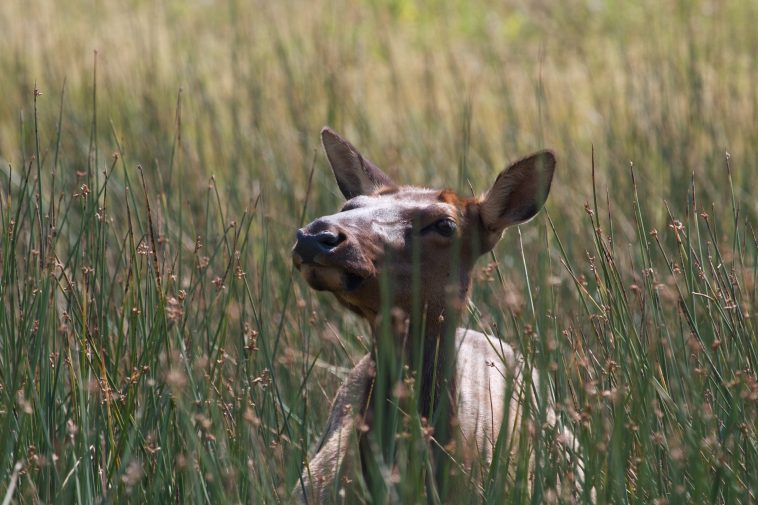
Female elk have the capacity to learn how to avoid hunters as they age — and they learn from each other’s mistakes, it turns out.
While female elk (Cervus elaphus) tend to live longer than their male counterparts simply because they are less targeted by predators, age also seems to correlate with predation rates. Cows over the of age of ten are rarely, if ever, shot by hunters.
The evidence is so compelling that scientists conducted a six-year study on the possibility that cows actually develop learned behaviors over time that help them avoid predators.
Researchers out of the University of Alberta tracked dozens of cows presiding in southwest Alberta and southeast British Columbia, Canada. The study encompassed both open grasslands and forested, mountainous areas in order to account for terrain as a variable factor.
Normal human disturbances included roadway traffic, camping, timber harvesting, and of course, hunting. Human hunting was shown to be the largest cause of elk mortality in the regions. Both bow-hunting and rifle-hunting were executed throughout specified seasons.

Forty-nine females were captured, fitted with trackers, and had their ages recorded. They were analyzed over a two to five year period.
The study reveals that both innate personality traits and learning attribute to the decreased predation of female elk as they age. Older elk became savvier at evading hunters, including displaying an aversion to roadways and utilizing rugged terrain during bow-hunting season, when proximity is an important predation factor.
Research suggests that because female elk live in groups, when a group is targeted and one elk falls prey to a hunter, the other members of the group have the opportunity to learn from this experience and adapt their behavior.

These astonishing results suggest that learning is an important factor in animal development.
The full study is published in PLOS.




